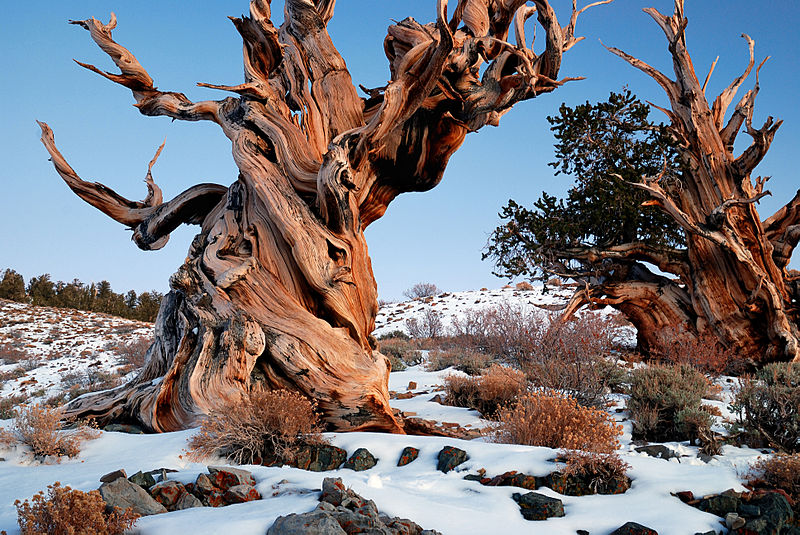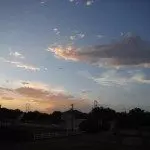Tree ring dating, otherwise known as dendrochronology, is often used as evidence that the earth is older than a straightforward reading of the biblical text allows. Bill Nye, TV’s popular “Science Guy”, even brought this up in his February debate with Ken Ham, CEO of Answers in Genesis and the Creation Museum. People assume that tree ring dating gives accurate and reliable dates because it is believed that trees only produce one growth ring a year. But is dendrochronology as reliable as people have been led to believe?
Bristlecone pines (BCP) are considered the oldest living organisms with the eldest, dubbed Methuselah, said to be 4,600 years old. This poses a problem for biblical creationists because biblical cues date the global Flood of Noah’s day at approximately 4,300 years ago. Since Methuselah, and other BCPs, are growing in post-Flood sediment, they must have sprouted after the Flood so they cannot be any older than a maximum age of around 4,300 years. But, when the interpretation of the evidence does not match with God’s Word, we should not modify God’s Word. Rather, we should test the interpretation in light of God’s Word.
As with any historical science, tree ring dating works in the past and is therefore not directly testable, repeatable, and observable. No scientist was taking measurements of BCPs growing in California’s White Mountains thousands of years ago. So we have to rely on the present to give us clues about the past. But, as with any historical science, the assumptions you have will interpret how you view the evidence. As Bible-believing Christians, we start with God’s Word and God’s chronology, not man’s idea that the “present is the key to the past.”
Bristlecone pines (Pinus aristata) grow in California’s White Mountains and many are found in environments where very little else will grow. The terrain is rocky, the winds are fierce, and the little precipitation that falls is usually in the form of snow. In this inhospitable climate the bristlecone pine has managed to gain a foothold and use its God-designed features to survive.
Dendrochronology rests on the assumption that trees, specifically BCPs, can only produce one growth ring a year. This is demonstrably not true, and even secular sources have briefly noted it. The plantation pine, in the same genus as the bristlecone pine, can produce up to five rings a year and the “false” rings (rings that are produced in addition to the annual ring) are barely, if not indistinguishable, from the supposedly “true” rings. Surely a member of the same species producing more than one ring a year should call into question the assumption that BCPs only produce a single ring per annum. Actually, multiple growth rings in a year have been documented in many species of both angiosperms and gymnosperms. Generally this added growth occurs in harsh, dry conditions similar to those experienced regularly by many BCPs. To test this assumption, a scientific study was done by creation scientist Walter Lammerts in which he used controlled experiments to show that young BCPs can produce more than one growth ring in a growing cycle, depending on environmental conditions such as drought or heat. Perhaps in the unsettled weather of the post-Flood, pre-Ice Age world BCPs had the perfect, unrepeatable conditions to rapidly produce many rings in a year.
Mark Matthews published an article in Journal of Creation in which he detailed a hypothesis that explains BCPs and that is perfectly consistent with a biblical worldview. He noted that BCPs growing in good conditions with nutrients, water, and shelter never reached the ancient ages of the comparatively haggard trees growing in the worst conditions. These means that, according to tree ring dating, trees growing in optimal conditions have yet to reach ancient ages but those living in the worst conditions do reach great ages. Matthews suggested that perhaps both groups live to the same maximum age but BCPs living in harsh climates grow multiple thin rings instead of a thick one each year. He then hypothesized that perhaps this move conserves precious water resources. Trees lose water through their leaves or needles as well as through their bark. A BCP growing in an arid area with little soil needs to conserve as much water as possible. Perhaps thin growth rings conserve water better than their thicker counterparts. Each growth ring consists of a light ring and a dark ring with the light ring thought to grow in the spring and the dark one in the fall. If, due to their design and the internal makeup of the tree, dark rings conserve more water than light rings it would make sense for BCPs to grow several rings in rapid succession during a single short growing season. This would provide dark rings to serve as buffers against water loss and would keep precious water vapour from escaping into the atmosphere. This is confirmed by other species of trees growing in similar environments that also grow many small rings, instead of larger rings. It is also confirmed by something known as “strip growth.” Strip growth is when most of a tree has died expect one long strip of bark that snakes up the tree and keeps the portion of the tree directly underneath it alive. All BCPs that yield ancient ages use strip growth. Since a tree increases in surface area each year as it grows, it will lose more water. Perhaps to conserve water BCPs resort to strip growth to restrict their surface area and therefore their water loss. Water conservation would explain why all “ancient” BCPs exhibit both many small rings and strip growth. While Matthew’s hypothesis needs more testing it is an exciting area of research for biblical creationists and may yield answers that will directly challenge old-earth assumptions about dendrochronology.
When the evidence doesn’t match up with a biblical worldview it is important to examine and question the assumptions behind the interpretation of the evidence. Remember, hard and fast “facts” of science are overturned every year but the Bible never changes. Dendrochronology and bristlecone pines are not evidence of an old earth. The assumptions behind it can be shown to be unreliable! Actually, dendrochronology confirms a young universe. If bristlecone pines and other trees can reach such vast ages then why do we not find any bristlecone pines that are dated at nine thousand or twelve thousand years? After all, a three hundred year dating discrepancy between the age of Methuselah, based on dendrochronology, and the age of the Flood is not hard to account for since the evidence suggest multiple rings per year. But a tree that had 9,000 or 10,000 rings would pose more of a challenge. But no such trees have been found. This points towards a young earth that has not been around long enough for trees to reach such vast ages. Science—including dendrochronology—confirms the Word of God from the very first verse.






Just learned more about Biblical Dateing. The 300 years differnece is no problem at all with Biblical dating. There is a “range” depending on math. One year in age can be 11 months and 30 days off. Figuring by geneology the age of the earth from creation can be 300 years different.
I agree, Brian. There is more than enough wiggle room left us by God to allow for such a range of dates. And, as Avery points out at the end of her article, we have never found a tree that gives us such extended numbers that we are forced to reshape our understanding of the Scriptures.
The modern emphasis on exactitude is anachronistic to any culture before the industrial revolution. They would find our desire to pin down an exact date befuddling!